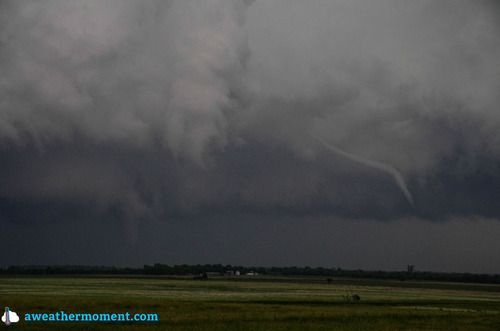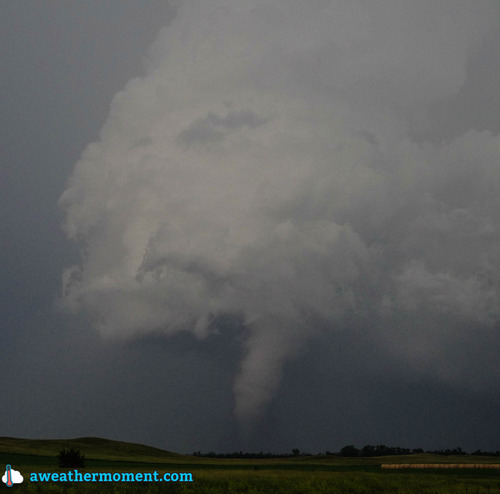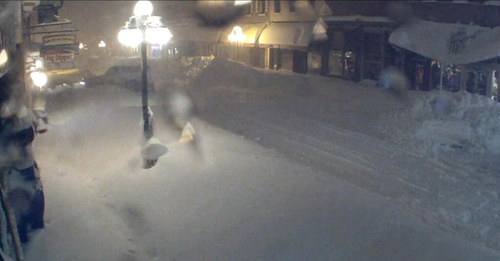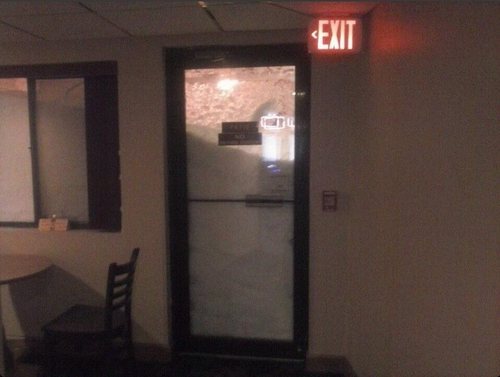South Dakota Wessington Springs Tornado – June 18th, 2014
Three members of A Weather Moment team headed out to South Dakota this past Wednesday to chase severe storms and try to catch a tornado. It turned out to be quite the event. Julien has written a summary of what how the chase unfolded.
We left Winnipeg bright and early at 7 am on Wednesday and headed south. Our plan for the day was to target the warm front/triple point in southeastern South Dakota. We reached Fargo by late morning. After getting our internet worked out and had lunch, we continued south to Sioux Falls, South Dakota to reassess things (by then it was mid/late afternoon). We decided to head west a bit to Mitchell first, then Plankinton, SD. It was oppressively humid with dewpoints in the low to mid 20’s and temperatures near 30°C. In fact, as I walked out of the car, my glasses were fogging up! These yielded MLCAPE values around 5,500J/kg resulting in an explosive environment for any storm that formed.
By then, storms to our northwest were strengthening rapidly and rotation became evident on radar imagery. A tornado was also reported by another storms chaser. We were concerned of the possibility that additional storms would fire off south of the existing ones and become dominant. As a result, we decided to wait a little longer. Nothing new was really forming due to a strong cap, so we decided to head west then north of Kimball, SD to view the existing storms. We were impressed! Towers were shooting up extremely rapidly and there was decent structure to the storm. Rotation could be seen in some parts of the storm.
Not too long later, we repositioned north of Plankinton, SD, which was eastward. As we got closer to the storm, two funnels poked out of the trees! It was evident that the one in the distance was a tornado. However, the second funnel was hard to say if it was touching down or not because it was not condensed all the way to the ground. However, it’s impressive seeing 2 funnels simultaneously!

We followed the storm eastward and the dominant tornado was not giving up! Even though we were well in the distance far away from the tornado, we could clearly see its circulating winds moving rapidly which was quite impressive. Unfortunately, we did occasionally see debris being picked up. It took several minutes for the tornado to finally rope out and lift… before we witnessed it strengthening and enlarging again briefly. Then it dissipated and that was it for tornadoes for us for the day. After our chase was finished, we had heard that there was serious damage to the town of Wessington Springs, SD however no serious injuries had been reported thankfully.

We slowly made our way east to Brookings, SD for the night at a hotel. We left back for Winnipeg Thursday morning before 11 am and reached Winnipeg by around 6 pm or so after stopping by at Longhorns restaurant for a well-deserved tornado steak dinner in Fargo. The next day NWS had done a damage survey of the tornado and rated it an EF-2 tornado, the strongest tornado we had ever witnessed. Overall, it was well worth the trip!
This trough not only produced tornadoes on Wednesday in South Dakota, but also on Monday and Tuesday in Nebraska, including the incredible supercell near Pilger, NE that produced two large wedge tornadoes simultaneously. The upcoming pattern definitely looks calmer with upper flow slacking up in the US Plains; possibly hinting that summer is right around the corner for the region.



